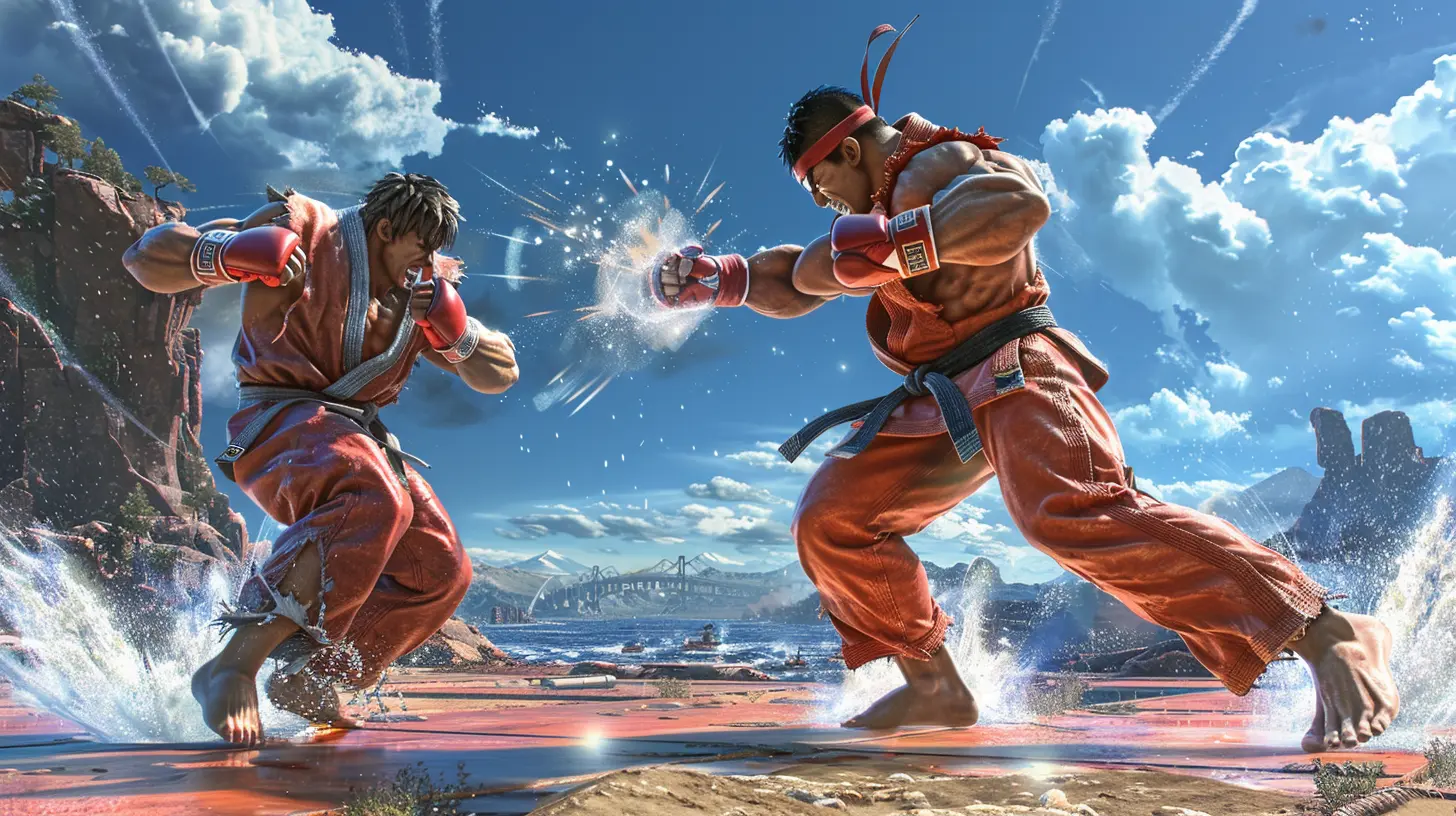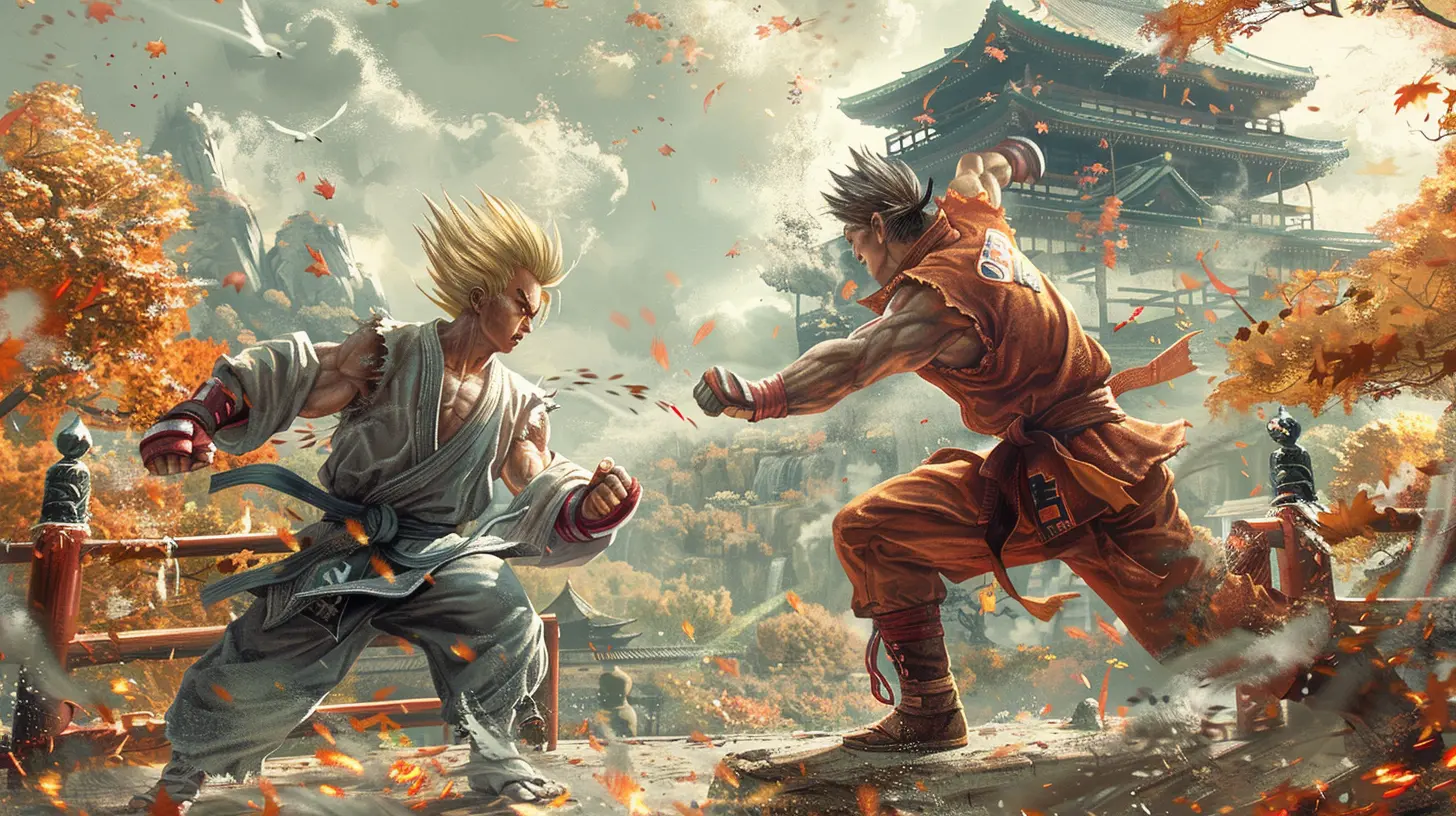Balancing Fun and Fairness in Casual Fighting Game Modes
19 August 2025
When it comes to casual fighting games, the whole point is, well, fun, right? You’re not grinding for trophies or sweating over ranked points. Instead, you’re kicking back with some quick matches, pulling off flashy moves, and maybe trash-talking your buddy on the couch (all in good spirits, of course). But there's an underlying challenge that developers face when crafting these modes: How do you balance fun and fairness without making one come at the expense of the other?
Let’s face it—fighting games are inherently competitive. Whether you're landing a picture-perfect combo or taking an absolute beating, fairness plays a big role in keeping players engaged. At the same time, casual modes need to be lighthearted and approachable to ensure they don’t scare away newcomers. It’s a tightrope walk, but when done right, the result is a game mode that appeals to both seasoned veterans and curious newbies. So, how exactly does this balancing act work? Stick around, and let's break it all down.
Why Balance Matters in Casual Modes
Think back to the last time you played a casual fighting game mode. Did it feel satisfying, or was it one-sided chaos? If it was the latter, you probably walked away frustrated—or worse, you might’ve quit entirely. That’s why balance is so critical.Balancing isn’t just about making sure no one character or move is overpowered. It’s about making sure the game feels good for everyone, whether it's their first match or fiftieth. A fair game keeps both players invested because, let’s be honest, nobody likes feeling cheated. Even in casual modes (arguably especially in casual modes), fairness is the glue that holds the fun together.
Imagine a game where one fighter has an unblockable move that wipes out half of your health bar. Sounds unfair, right? Now throw that move into a casual mode where people are just trying to have fun. Suddenly, it’s not casual or fun anymore—it’s just annoying.
What Makes Casual Fighting Modes "Fun"?
Before diving into how to balance things, let’s address what makes casual fighting modes fun in the first place. Sure, part of it is flashy moves and intense action, but there’s more to it than that.1. Accessibility:
Casual modes often serve as the entry point for newcomers. Complex inputs and frame-perfect timing aren’t what people are looking for here—they want something accessible. Think of it like a party game: if someone can’t figure out the basics within a few minutes, they’re likely to lose interest fast.
2. Creativity:
Pulling off wild, over-the-top moves that you'd never dare attempt in a competitive setting? That’s the good stuff. Casual modes thrive when they give players room to experiment without fear of being punished.
3. Unpredictability:
Random elements, like stage hazards or power-ups, can keep matches exciting. While they might not be suitable for serious play, these chaotic mechanics add a layer of unpredictability that keeps things entertaining.
Remember, fun is subjective. What one player finds hilarious, another may find frustrating. The challenge lies in finding a mix that appeals to the widest audience possible without alienating anyone.
Mechanics That Promote Fairness
Now, onto fairness. This is where things get tricky because fairness doesn’t mean making everything equal; it means making everything feel fair. There’s a subtle but important difference there. Let’s break down a few mechanics developers use to keep things feeling balanced.1. Dynamic Handicaps
One way to level the playing field is by introducing dynamic handicaps. For example, if one player is clearly dominating, the game might give their opponent a slight advantage, such as filling up their special meter faster. Think of it as the game’s way of saying, “Hey, let’s keep this close.”This mechanic walks a fine line, though. If the handicap is too generous, skilled players may feel punished for doing well. On the flip side, if it’s too weak, it doesn’t help balance the match. It’s a delicate dance that requires testing and tweaking.
2. Simplified Controls
Complex mechanics can overwhelm casual players. Simplified controls lower the barrier to entry and make fighting games more approachable. Look at titles like Smash Bros. or Dragon Ball FighterZ. While these games have depth for competitive players, they also allow new players to jump in and have a blast without memorizing long combo strings.Simplified controls can also help in situations where two players are at vastly different skill levels. A skilled player might execute a 15-hit combo, but a newcomer should still be able to bust out something cool with minimal effort.
3. Randomized Elements
Stage hazards, environmental effects, and power-ups can dramatically shift the momentum of a match. These mechanics are often controversial because they can feel unfair—but they’re also part of what makes casual modes exciting.Think of them as the "blue shell" from Mario Kart: if you’re in last place, that power-up can give you a chance to turn things around. While it may make competitive players groan, in casual modes, it’s a fantastic equalizer.
Striking the Right Balance: Tips for Developers
Crafting a casual fighting mode is like making the perfect recipe. Too much chaos? You lose the fairness. Too much balance? You lose the fun. Here are a few tips for getting it just right:1. Test with a Variety of Players
It’s easy to cater to hardcore fans or brand-new players, but casual modes need to appeal to everyone. Testing with a mix of skill levels ensures the experience feels balanced across the board.2. Offer Toggable Options
Not everyone likes random stage hazards or assists. By making these features optional, players can tweak the experience to their liking without ruining it for others.3. Emphasize Comeback Mechanics
Nobody enjoys feeling like they’re out of the fight early on. Comeback mechanics, like super meters that charge faster when you’re low on health, keep the matches competitive and exciting.4. Embrace Humor
Casual modes are meant to be lighthearted, so don’t be afraid to lean into the absurd. Silly costumes, exaggerated move animations, or even random in-game jokes can make a big difference.The Player's Role in Maintaining Balance
Let’s not forget: balance isn’t entirely up to developers. As players, we’ve got a role to play too. If you’re an experienced player going up against a total newbie, maybe ease up a bit. Try experimenting with a character you’ve never used instead of relying on your main. After all, the whole point of casual modes is for everyone to have fun.That being said, it’s also okay to communicate! If you’re playing with friends, talk about what feels fair or unfair. Maybe certain mechanics could be off-limits, or house rules could make things more enjoyable. Gaming is a social experience—don’t be afraid to adjust things for the sake of everyone having a good time.
Final Thoughts: Finding the Sweet Spot
Balancing fun and fairness in casual fighting game modes isn’t easy, but it’s absolutely worth it. When developers get it right, they create a space where players of all skill levels can enjoy themselves without feeling overwhelmed or outmatched. And honestly, isn’t that what gaming is all about?Whether you’re landing devastating combos or spamming ridiculous special moves, the key is ensuring every player feels like they’ve got a chance. So, the next time you’re diving into a casual mode, take a moment to appreciate the careful thought that goes into making it both fair and fun. And most importantly? Just enjoy the ride.
all images in this post were generated using AI tools
Category:
Fighting GamesAuthor:

Jack McKinstry
Discussion
rate this article
1 comments
Wolf Adams
Great insights! Balancing fun and fairness is key for engaging gameplay!
September 1, 2025 at 4:01 PM

Jack McKinstry
Thank you! I completely agree—striking the right balance is essential for a truly enjoyable experience.


